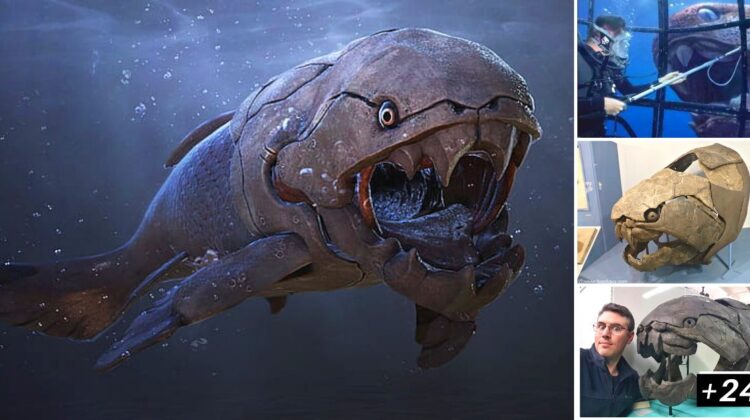
The name Dunkleosteus is a combination of two words: ‘osteon’ is a Greek word for bone, and Dunkle is named after David Dunkle.
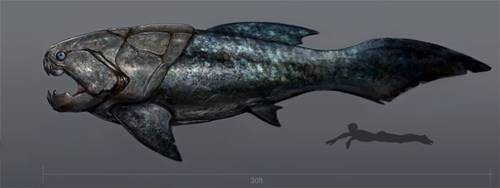
a well-known American paleontologist whose work primarily focused on fish fossils and is best known for his work in vertebrate paleontology at the Cleveland Museum of Natural History.
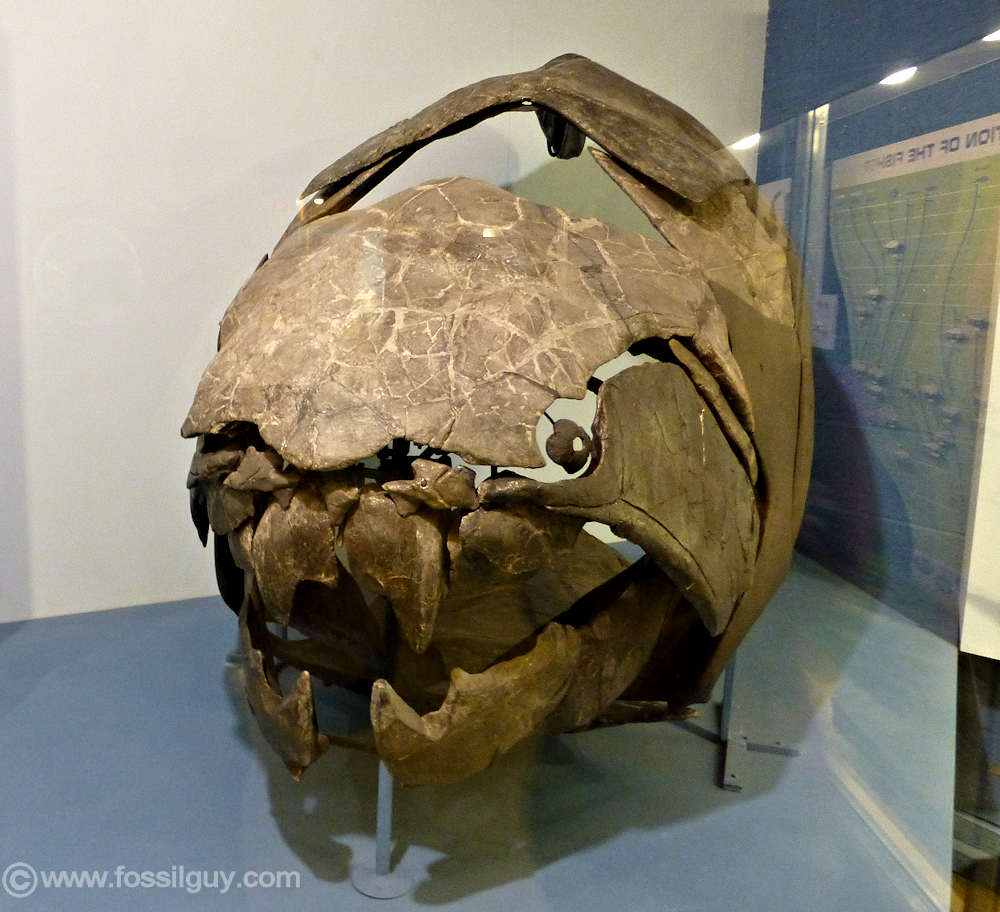
This placoderm is known to eat anything, or at least most things, and is also fast and powerful.
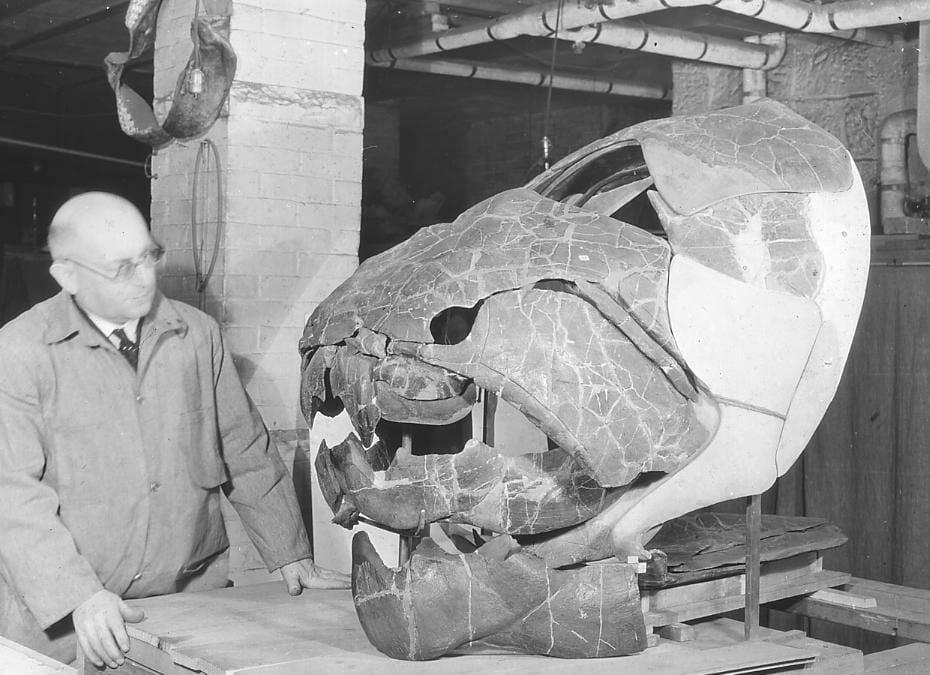
The Dunkleosteus is one of the largest placoderms ever to have lived and is thought to have been one of the fiercest during the Late Devonian period, also known as the ‘Age of Fishes.’

The Dunkleosteus was known to weigh up to 8000 lb (3600 kg) and have a length of up to 346 in (8.8 m).
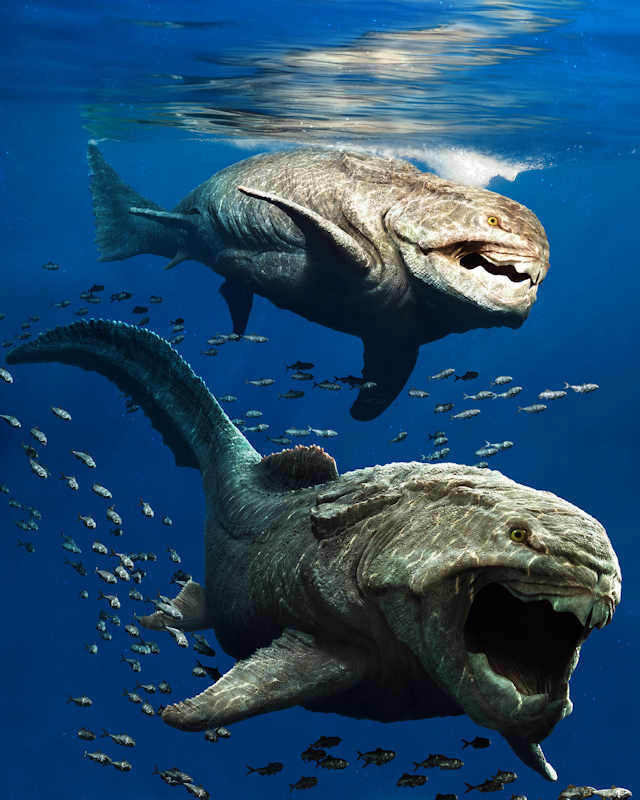
D. terrelli, D. Belgicus, D. denisoni, D. marsaisi, D. magnificus, D. missouriensis, D. newberryi, D. amblyodoratus, and D.raveri are the ten species of Dunkleosteus.

Dunkleosteus placoderms are known for their strength and ability to move their jaws quickly, allowing them to easily prey on animals.
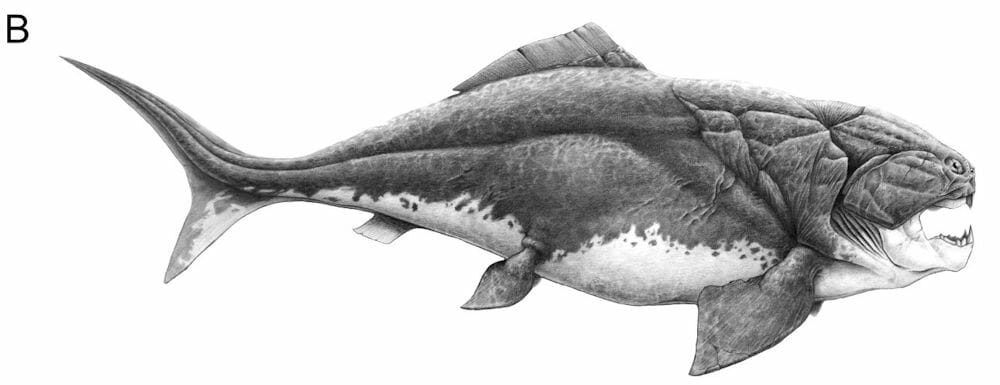
Dunkleosteus fossils have been discovered in North America, Morocco, Poland, and Belgium, among other places.
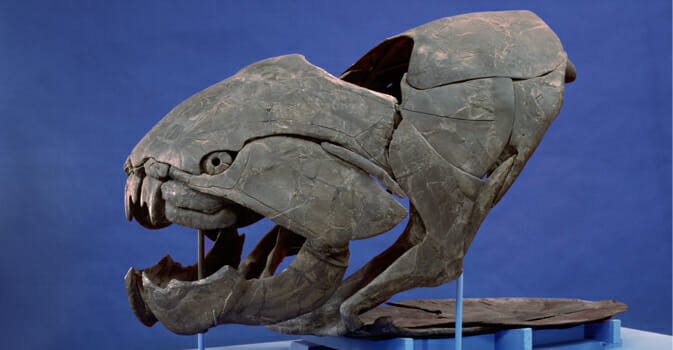
The Dunkleosteus comes across as a gripping species but unfortunately, there is limited information available about the species due to its extinction and age as it existed 360-370 million years ago.
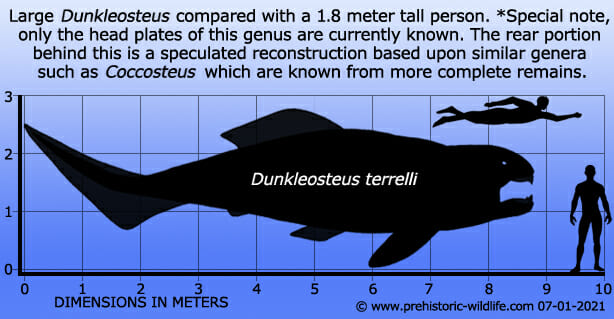
While not much is known about a lot of parts of the Dunkleosteus body, a lot of information has been extracted from the fossils of Dunkleosteus and its reconstruction.
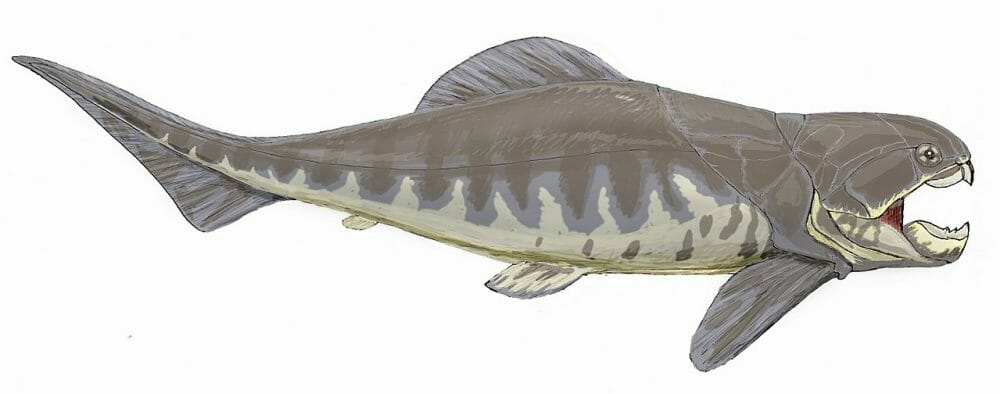
It was discovered that the Dunkleosteus had a two-part bony and armored exterior. The Dunkleosteus is also known to have two pairs of sharp bony plates that formed a beak-like structure.
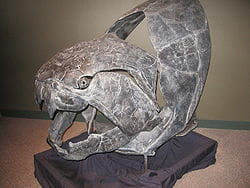
Reconstructions have also revealed that some species of the Dunkleosteus had pectoral fins and thus, the fin pattern in the placoderms is highly influenced by the movement requirements.
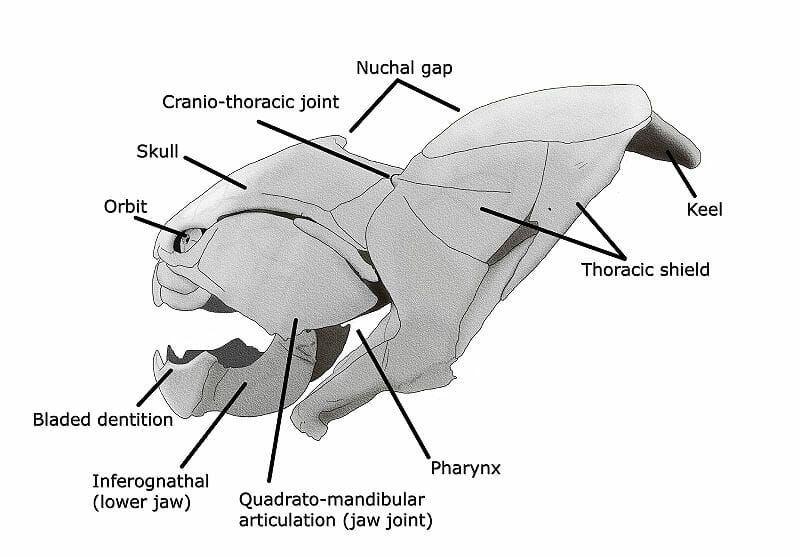
The species Dunkleosteus terrelli is known to have a more shark-like appearance with a strong anterior lobe on its tail.

The Dunkleosteus is known to be the fiercest fish alive during the Late Devonian period. It is known to be 346 in (8.8 m) long and could weigh up to 8000 lb (3600 kg), which makes it one of the largest placoderms ever lived.
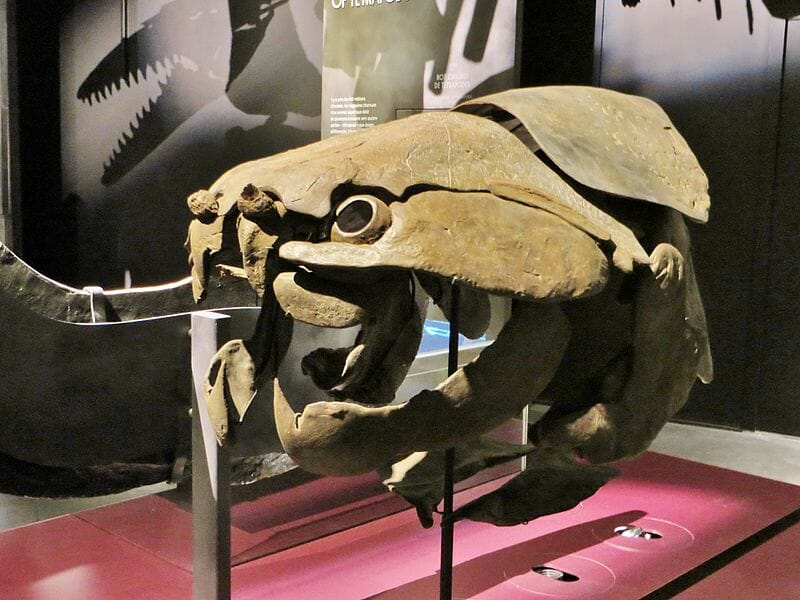
The Dunkleosteus is known for its big and powerful build and is known to have an immense bite force that could chop prehistoric sharks easily.

A Dunkleosteus is known to be one of the largest species of fish ever lived. They could weigh up to 8000 lb (3600 kg) which makes them bulky animals.
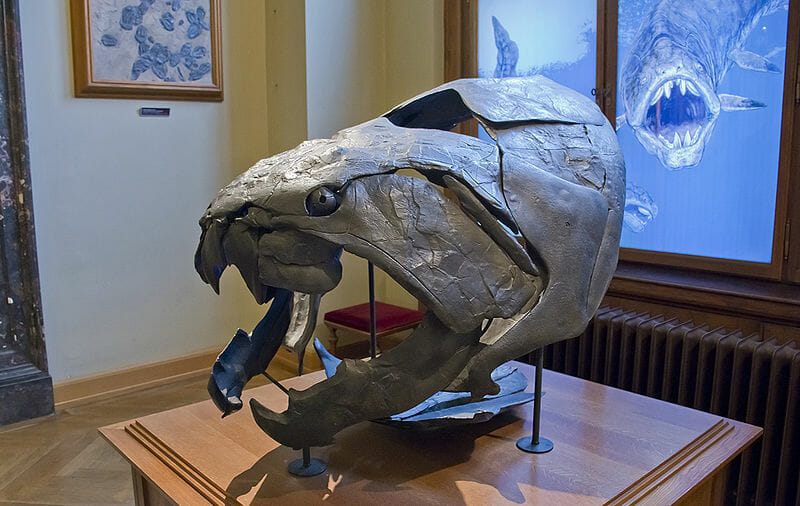
It is believed that Dunkleosteus was not a particularly good swimmer. As it mostly was found in the shallow seas and oceans,
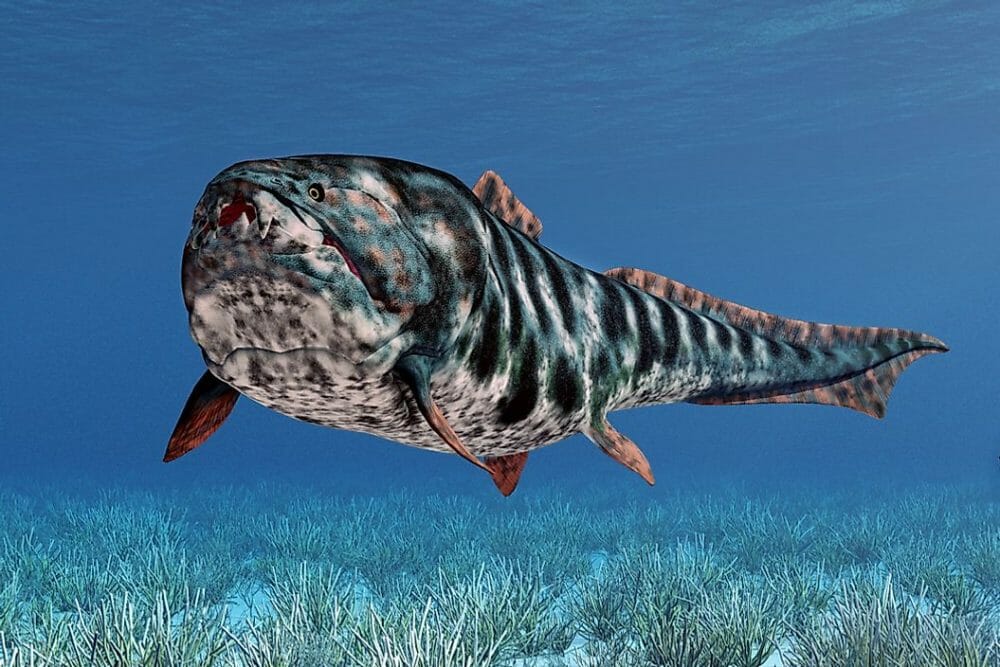
their bony structure was sufficient to defend themselves against other creatures in the fish and their availability did not lead Dunkleosteus to go deep into the sea to search for food.
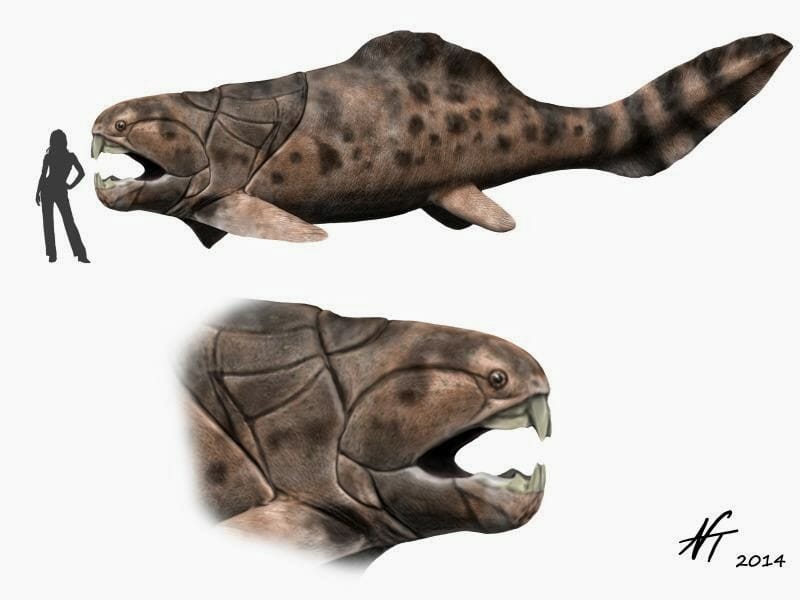
The heavy and bony body with its armor-like bone structure made the Dunkleosteus slow swimmer.
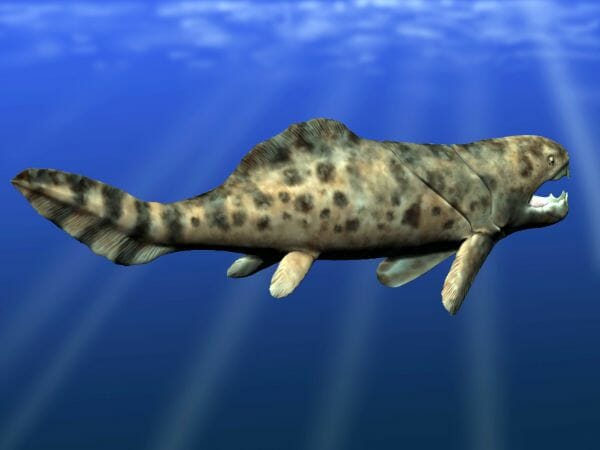
The Dunkleosteus is known to have used a mechanism called four-bar linkage, which allowed it to open its jaw very fast and produce high bite force when closing the jaw.

The pressure generated helped the Dunkleosteus to cut through any cuticle or dental built or armor.

Thus, it is believed that apart from ammonites and other placoderm fish and sharks, and other free-swimming species, they are also known to eat fish from their own species when short of food.

This is supported with evidence of fish bones and other semi or indigested materials found in the fossils.

The habitat of a Dunkleosteus is rather unknown but it has been stated that Dunkleosteus was found in shallow seas of the world.

It is believed that there is a high possibility that Dunkleosteus was one of the first animals to reproduce by the method of egg fertilization and thus, reproduce sexually.

The lifespan of a Dunkleosteus is unknown but it lived 360-370 million years ago during the Devonian period.

Are they dangerous?
The Dunkleosteus is considered to be one of the most dangerous sea predators.

A lot of factors have been associated with this armored predator which tends to make the Dunkleosteus one of the dangerous placoderms.

Its cannibalistic nature and ability to bend metal are the main reasons. Others include the strong jaw, bite force, pairs of sharp bony plates that make it capable of chopping or cutting hard materials or skins, and the large and strong build.




Ref: wikipedia, worldatlas, newdinosaurs, kidadl, allosaurusroar
Pic: wikipedia, worldatlas, newdinosaurs, kidadl, prehistoric-wildlife, cmnh, fossilguy, allosaurusroar

Leave a Reply